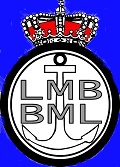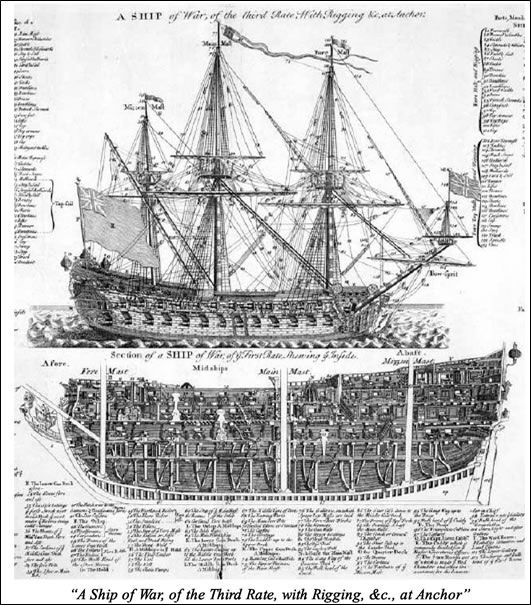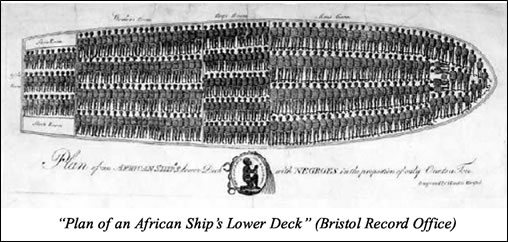

HISTORIEK HISTORIQUE HISTORIC
- Welcome
Accueil - Nieuws
Nouvelles- 16/06 Russia's Novatek may scale back Arctic LNG 2, focus on Murmansk
- 19/06 CMB.Tech
- 21/06 REBO nv, de zwaarlastterminal van Haven Oostende, zit volop in groeiscenario
- 26/06 Maersk innovates system to deliver freshwater from vessels to ports
- 28/06 Russian oil and products trapped on tankers hit by new Iran-related sanctions
- 30/06 DEME haalt grootste bekabelingsopdracht ooit binnen in NederlandUntitled Item
- 03/07 Tanker giant Frontline: ‘We’re in for a longer one’ in current upcycle
- 05/07 Haven Oostende trekt nieuw innovatief bedrijf aan: Cspect voert onderwaterinspecties met drones en robots uit
- 07/07 Western insurers say Russian oil price cap doesn’t work
- 10/07 Tanker Flows In a State of Constant Flux
- 12/07 Nautische Commissie
- 17/07 Elia bouwt in Haven Oostende servicecenter voor energie-eiland
- 19/07 Euronav boekt bijna half miljard dollar nettowinst in eerste kwartaal
- 21/07 Houthis reiterate Mediterranean attack warning
- Kalender Calendrier
- BML Nieuws
LMB Nouvelles - Historiek
Historique - Dossier
Dossier
- 18/06 Suez Canal toll earnings set to continue falling, as vessels re-route around the Cape of Good Hope
- 20/06 Flags of Deceit could take shipping back to the bad old days
- 22/06 Houthi attacks on Red Sea shipping: Charterparty implications
- 25/06 What are the impacts of the Red Sea shipping crisis?
- 27/06 Your Name’s Not Down, You’re Not Coming In?
- 29/02 Oil investors are adrift in Red Sea rip currents
- 02/07 Amendments to the Limitation of Liability Act Through the Years
- 04/07 Supreme Court guidance on war risk provisions in charterparties
- 06/07 How TotalEnergies is decarbonizing
- 09/07 The Dutch have a lot to learn from other Europeans
- 11/07 Should Navy hospital ships be armed?
- 13/07 Hull biofouling – key recommendations
- 16/07 OPINION: ARE SAIL-Opinion: Are sail -assisted ships just a lot of hot air?
- 18/07 Biden administration warns Congress about China’s major presence at critical US ports
- 20/07 Chemship blazes the trail with wind propelled chemical tanker
- Raad
Comité - Verenigingen
Associations - Contacten
Contacts - Links
Liens - Boeken
Livres - Archives
Archieven- Archieven 1 - Archives 1
- Archieven 2 - Archives 2
- Archieven 3 - Archives 3
- Archieven 4 - Archives 4
- Archieven 5 - Archives 5
- Archieven 6 - Archives 6
- Archieven 7 - Archives 7
- Archieven 8 - Archives 8
- Archieven 9 - Archives 9
- Archieven 10 - Archives 10
- Archieven 11 - Archives 11
- Archieven 12 - Archives 12
- Archieven 13 - Archives 13
- Archieven 14 - Archives 14
- Archieven 15 - Archives 15
- Archieven 16 - Archives 16
- Archieven 17 - Archives 17
- Photos
Foto's
Outlaws of the Atlantic (I)
MARCUS REDIKER
The European deep-sea sailing ship—and the seamen who made it go—transformed the world. On the Santa Maria, on which Columbus crossed the Atlantic, on the Victoria, on which Magellan circled the globe, and on the ever-growing fleets of merchant and naval vessels that linked the seven seas, their continents, and their peoples, the motley crews who worked aboard the most sophisticated machines of their day made history. By moving commodities such as silver, spices, and sugar over long distances they built the world market and the international economy. By carrying traders, settlers, and empire builders to Africa, Asia, and the Americas, they changed the global political order. Deep-sea sailors thus made possible a profound transformation: the rise of colonialism, capitalism, and our own vexed modernity.
Yet sailors have never gotten their due in the history books. Bertolt Brecht asked, “Who built the seven gates of Thebes?” He answered, “The books are filled with the names of kings,” but then he wondered, “Was it kings who hauled the craggy blocks of stone?” Explorers like Columbus and Magellan, and admirals like Horatio Nelson, have long dominated our view of the history of the sea, but that at last has begun to change. Histories of “great men” and national glory by sea have, over the past generation, been challenged by chronicles of common sailors and their many struggles. Maritime history has grown to include indentured servants and enslaved Africans, whose transatlantic lives were mediated by a gruesome yet formative Middle Passage across the sea. The rise of social history since the 1970s has of course transformed our view of many historical subjects, but few have witnessed as dramatic a reorientation as maritime history.
Within the more recent rise of transnational and world history the sailor has begun to move from the margins—his customary position in national histories —to a more central position as one whose labors not only connected, but made possible, a new world. It is increasingly obvious that crucial historical processes unfolded at sea and that seafaring people were history makers of the first importance. This collection of my work over the past thirty years focuses on both transformations, bringing together the Atlantic and global histories of seafaring and slavery, the rise of capitalism and the many challenges to it from below—often literally, from below decks.
In writing maritime history from below, I have encountered not only the elitism of the old maritime history but an obstacle more subtle and less understood: the uninspected assumption that only the landed spaces on the earth’s surface are real. Perhaps it is not quite right to call this assumption a matter of thought; it is more an instinct, a mental reflex, and perhaps all the more powerful and pervasive for being unconsidered. One suspects that it is a matter of mentalité, a deep structure of Western thought that has an ancient history. Yet it must also be noted that this way of looking at the world—I call it terracentric—was surely strengthened by the rise of the modern nation-state in the late eighteenth century, after which power and sovereignty would be linked to specific ethnic, civic, and national definitions of “the people” and their land, their soil. At the same time the Romantic generation simultaneously “evacuated” the sea of real ships and sailors—“dirty bilge water and people at work,” writes literary scholar Margaret Cohen—substituting a sea wild and sublime, populated with imaginary figures, fit for aesthetic contemplation.
The other side of terracentrism is the unspoken proposition that the seas of the world are unreal spaces, voids between the real places, which are landed and national. This logic—the bias of landed society—is evident in the work of thinkers as radically different as novelist Joseph Conrad and philosopher Michel Foucault. Conrad, who spent considerable time at sea, called the oceangoing ship “a fragment detached from the earth.” The statement suggests that the ship is disconnected not only from the land, but somehow from the planet, existing in a realm apart. Foucault called the ship “a floating piece of space, a place without a place, that exists by itself, that is closed in on itself, and at the same given over to the infinity of the sea.” The ocean, in this formulation, is not only a place apart, it is “no place”—the original meaning of utopia. In both cases there is a refusal to consider the ocean as a real, material place of human work and habitation, a place where identities have been formed, where history has been made.
The West Indian poet Derek Walcott exposed and attacked Western terracentric bias in his poem “The Sea Is History,” which reflects on the experience of the peoples of the African diaspora:
Where are your monuments, your battles, your martyrs? Where is your tribal memory? Sirs,
in that gray vault. The Sea.
The sea has locked them up. The sea is History.
Walcott challenges us to overcome a deeply inculcated, often unconscious terracentrism, which would have us believe that the oceans are empty places, without history. It is our job to unlock the gray vault and make it give up its deep, hidden secrets.
 This image of a third-rate man-of-war demonstrates the architecture of the deep-sea sailing ship: the three decks; the numerous compartments; the storage of supplies in casks and hogsheads; the small arms, gunpowder, and cannon; and the extraordinary complexity of rigging. The “gunned warship” combined mobility, speed, and great destructive power. When it showed up in parts of the world that had never before witnessed such a machine, it caused wonder. It was called a “floating island” and indeed it was: some men-of-war had crews of a thousand men, as many as a small town. The firing of the guns turned astonishment to terror. One observer noted that it was enough to make non-Europeans “worship Jesus Christ.”
This image of a third-rate man-of-war demonstrates the architecture of the deep-sea sailing ship: the three decks; the numerous compartments; the storage of supplies in casks and hogsheads; the small arms, gunpowder, and cannon; and the extraordinary complexity of rigging. The “gunned warship” combined mobility, speed, and great destructive power. When it showed up in parts of the world that had never before witnessed such a machine, it caused wonder. It was called a “floating island” and indeed it was: some men-of-war had crews of a thousand men, as many as a small town. The firing of the guns turned astonishment to terror. One observer noted that it was enough to make non-Europeans “worship Jesus Christ.”
The armed European deep-sea sailing ship was the means by which a vast oceanic commons was made safe for private property. It projected European imperial sovereignty onto the seas around the world. It made possible the circulation of commodities and the resulting global accumulation of capital from the late fifteenth century onward, unleashing a profound set of interrelated changes. Perhaps the greatest of these was the creation of the world market, whose existence can be summed up simply: no ships, no world market, because water links the continents of the globe. And of course the ship moved only because of the collective labor of the sailor, who slowly and fitfully knit together the world economy, integrating the various regions (Africa, the Americas, Asia) at different moments into an expanding whole.
Historian Eric Hobsbawm wrote, “the creation of a large and expanding market for goods and a large and available free labor force go together, two aspects of the same process.” So it was that the deep-sea sailing ships of Europe were operated by an ever-growing mass of free wage laborers. Global shipping required a maritime proletariat, whose members, aboard ship, were called “hands.” Sailors usually had no means of production (no land, skill, or craft tools) and were thereby reduced to the labor of their hands to get a living. In organizing the sailing ships of the world, the ruling classes of Europe learned to think about labor as a commodity, buying and selling the labor power of seamen in an international market, for money. As the father of modern economics, Sir William Petty, wrote in 1690, “the Labour of Seamen, and Freight of Ships, is always of the nature of an Exported Commodity, the overplus whereof, above what is Imported, brings home mony, &c.”
The European rulers of the terraqueous globe also saw that there were other important ways to think about labor power as a commodity. Tall ships were once again central to the process. The slave ship Brooks sailed out of Liverpool between 1782 and 1804 and carried more than five thousand Africans across the Atlantic to the burgeoning slave societies of the Americas. This familiar image (Plan of an African Ship’s Lower Deck), drawn by abolitionists, was designed to make real to contemporary readers the human horrors of the slave trade—the tight packing of bodies in cramped spaces below decks. No small part of the horror lay in the systematic annihilation of individual identity built into the process. The slave ship appeared as a factory, mass-producing African bodies for the plantations of the Americas. Labor power was brutally rendered for what it was: a commodity. The sinister industrial quality of the image drove the point home.
 This image bears useful comparison to another, less familiar one, of a naval vessel from the same era, HMS Bedford. Here labor power is represented, not by actual bodies, but more discreetly as individually drawn hammocks in which sailors slept below decks, with not much more room than enslaved Africans had on slave ships. If the representation of the Brooks was meant to shock and horrify, the image of the Bedford had a more prosaic purpose: to show how hundreds of sailors (originally shown in blue) and marines (in red) might physically inhabit the lower deck of a warship. In both cases the depiction of labor power as a commodity was the order of the day. The fundamental class relationships of modern capitalism, involving both slave and free labor, were thus mediated by the ship.
This image bears useful comparison to another, less familiar one, of a naval vessel from the same era, HMS Bedford. Here labor power is represented, not by actual bodies, but more discreetly as individually drawn hammocks in which sailors slept below decks, with not much more room than enslaved Africans had on slave ships. If the representation of the Brooks was meant to shock and horrify, the image of the Bedford had a more prosaic purpose: to show how hundreds of sailors (originally shown in blue) and marines (in red) might physically inhabit the lower deck of a warship. In both cases the depiction of labor power as a commodity was the order of the day. The fundamental class relationships of modern capitalism, involving both slave and free labor, were thus mediated by the ship.

As European rulers organized a transoceanic capitalist economy, they necessarily created new relationships among workers, in their own nations and around the world. To put the same point a different way, the organization of production for greater profits required a new cooperative division of labor worldwide. As the great West Indian scholar/activist C. L. R. James wrote: “The more capital succeeds in organizing itself, the more it is forced to organize the working class.” The dynamics of transoceanic accumulation depended on collective working relationships among ever larger and more diverse bodies of workers, to produce and transport the commodities of the world. Agricultural laborers had to be linked to craft workers, who in turn had to be linked to dockworkers and sailors. As these linkages multiplied with the expansion of the capitalist economy, something new began to happen: these groups of people brought together by the productive power of capital began to conceive projects of their own. In short they transmuted their cooperation for capital into something else. For example, the sailors who cooperated to sail the ships of London discovered their common interests in 1768, when after a wage cut they went from vessel to vessel, striking (taking down) the sails and immobilizing the world’s greatest shipping fleet. The “strike” was born and would circulate rapidly among working people around the world. Other forms of resistance, from running away, to mutiny, piracy, slave revolt, urban riots and insurrections, and even revolution—all examined in this book—emerged from new forms of cooperation. Atlantic commercial networks of accumulation became Atlantic networks of self-activity and subversion. The organization of capitalism and empire from above created resistance to capitalism and empire from below, as we shall see in the following chapters.
LMB-BML 2007 Webmaster & designer: Cmdt. André Jehaes - email andre.jehaes@lmb-bml.be